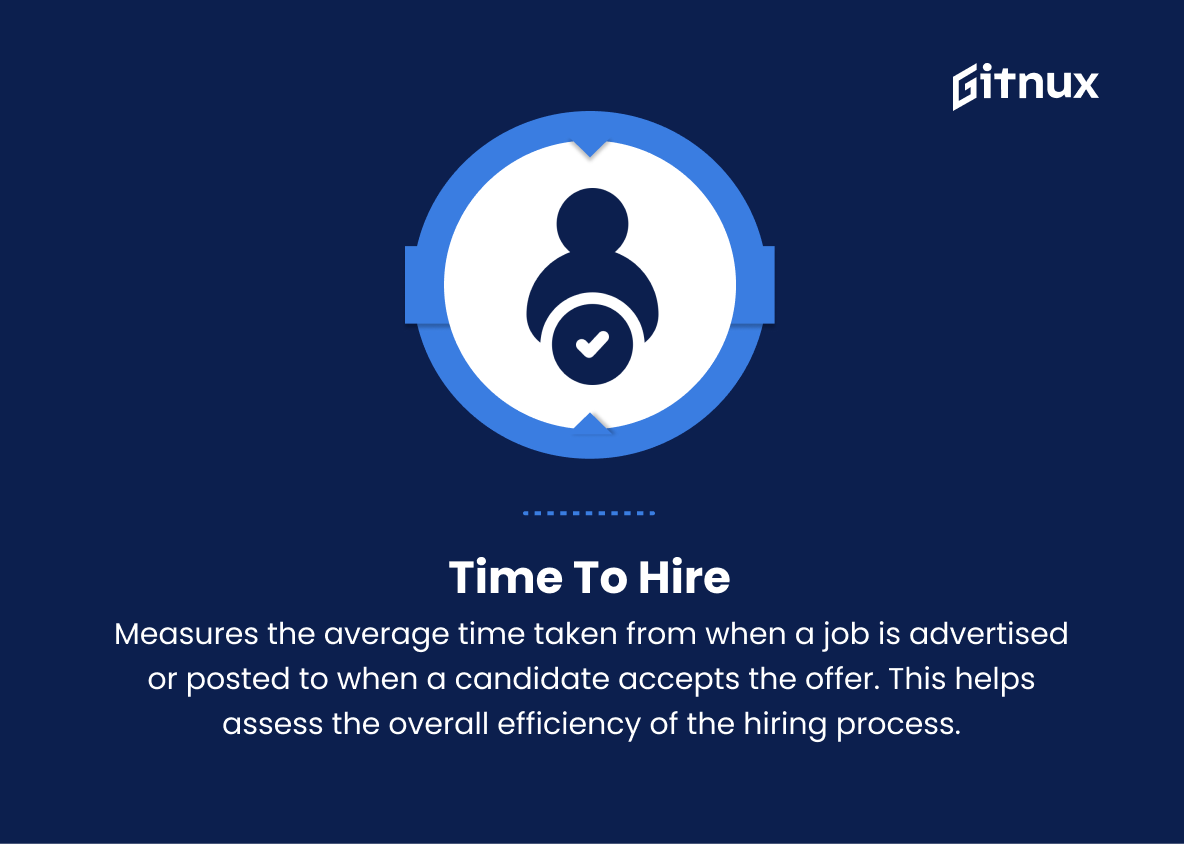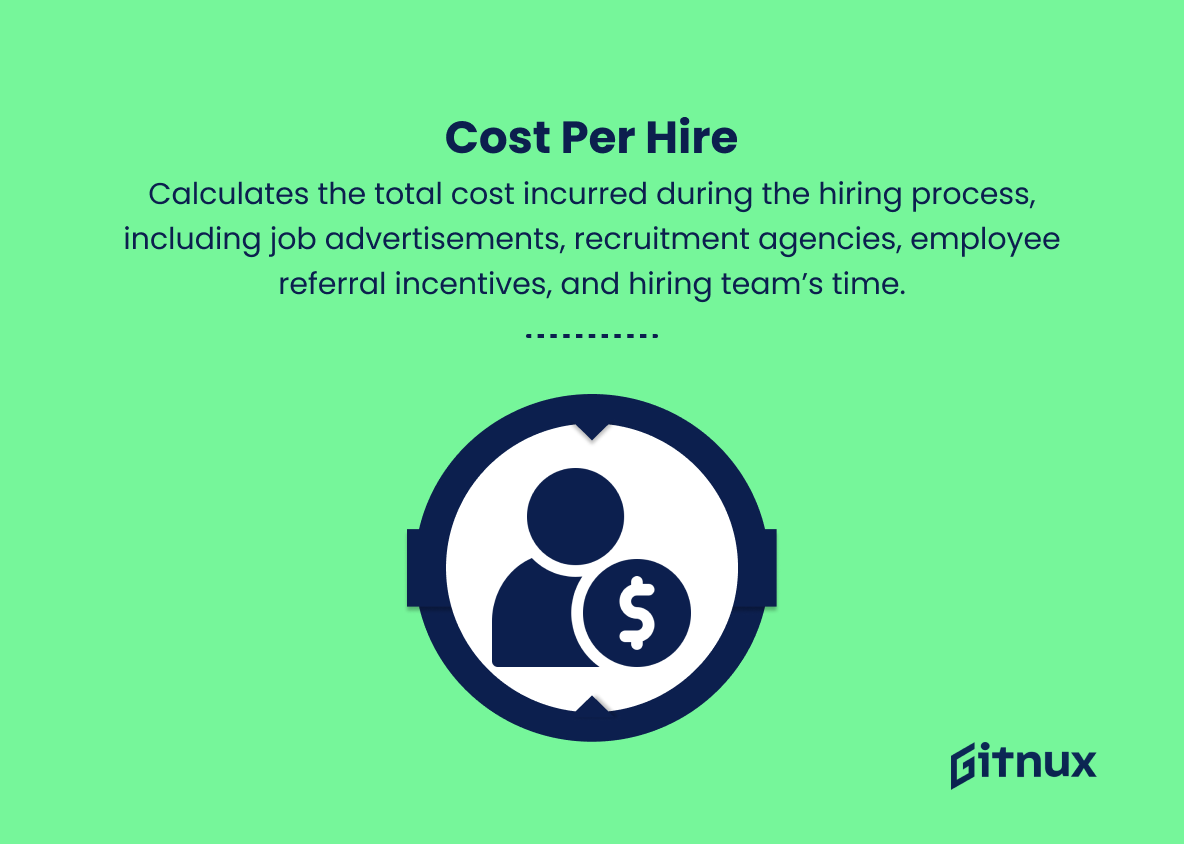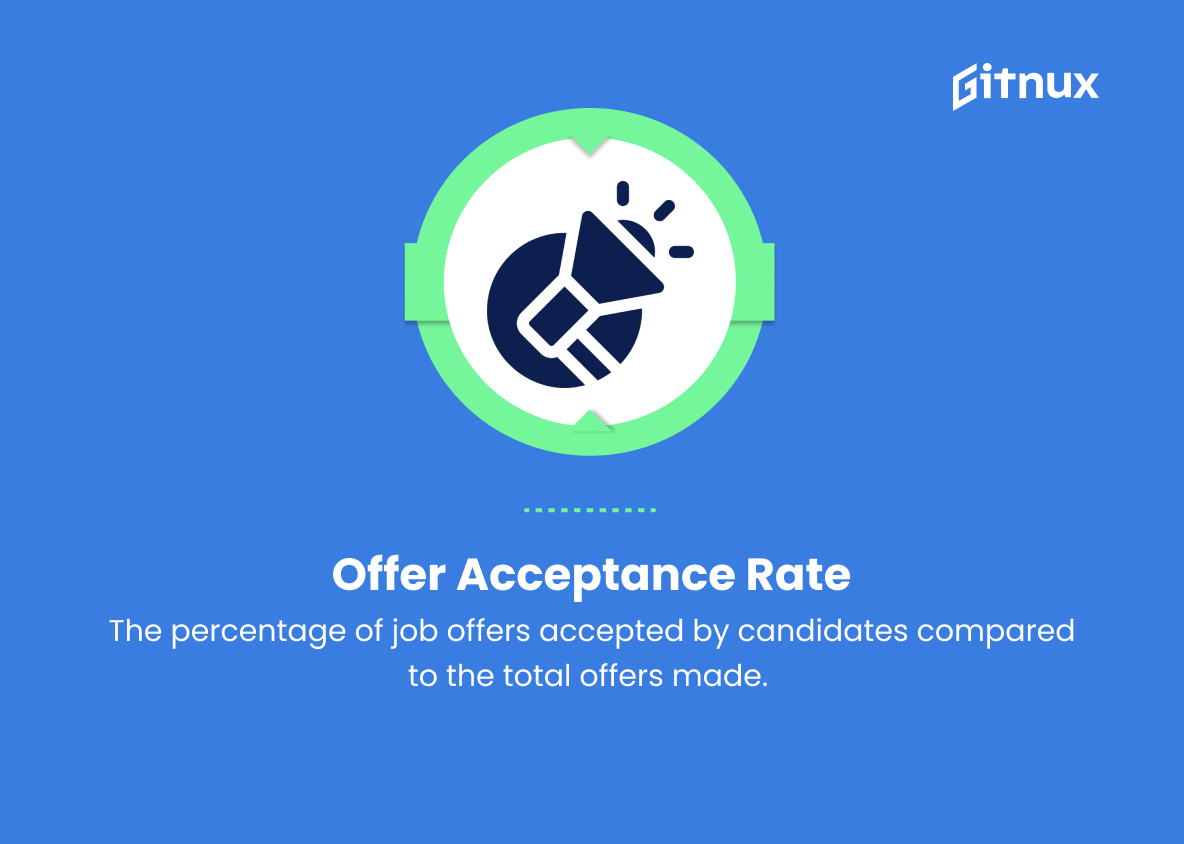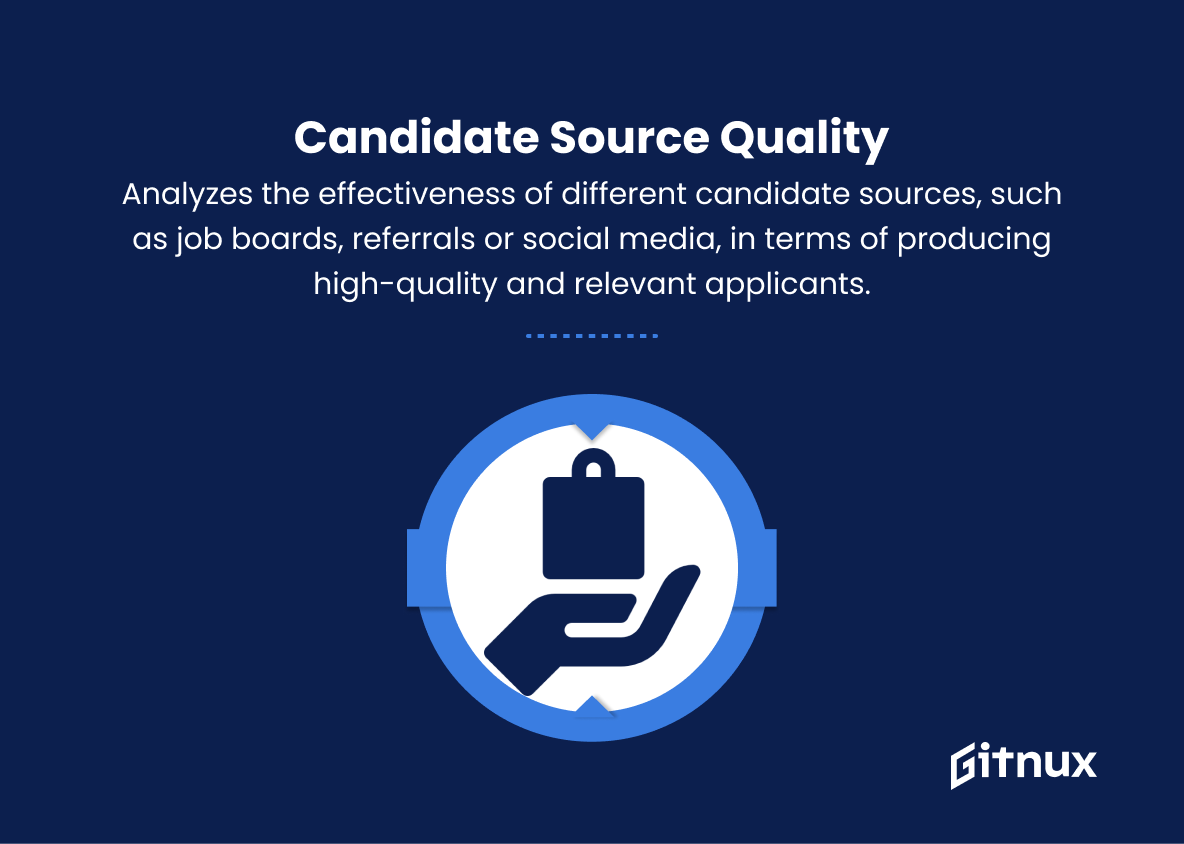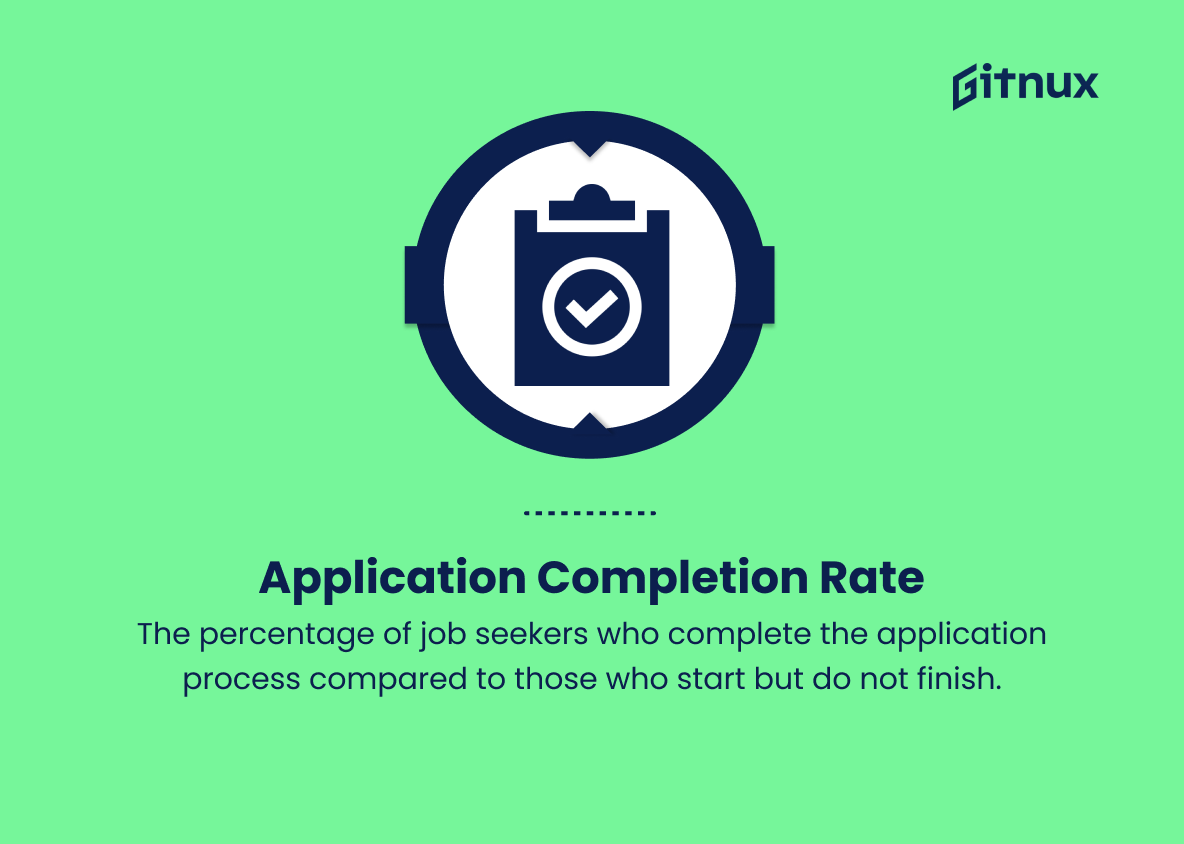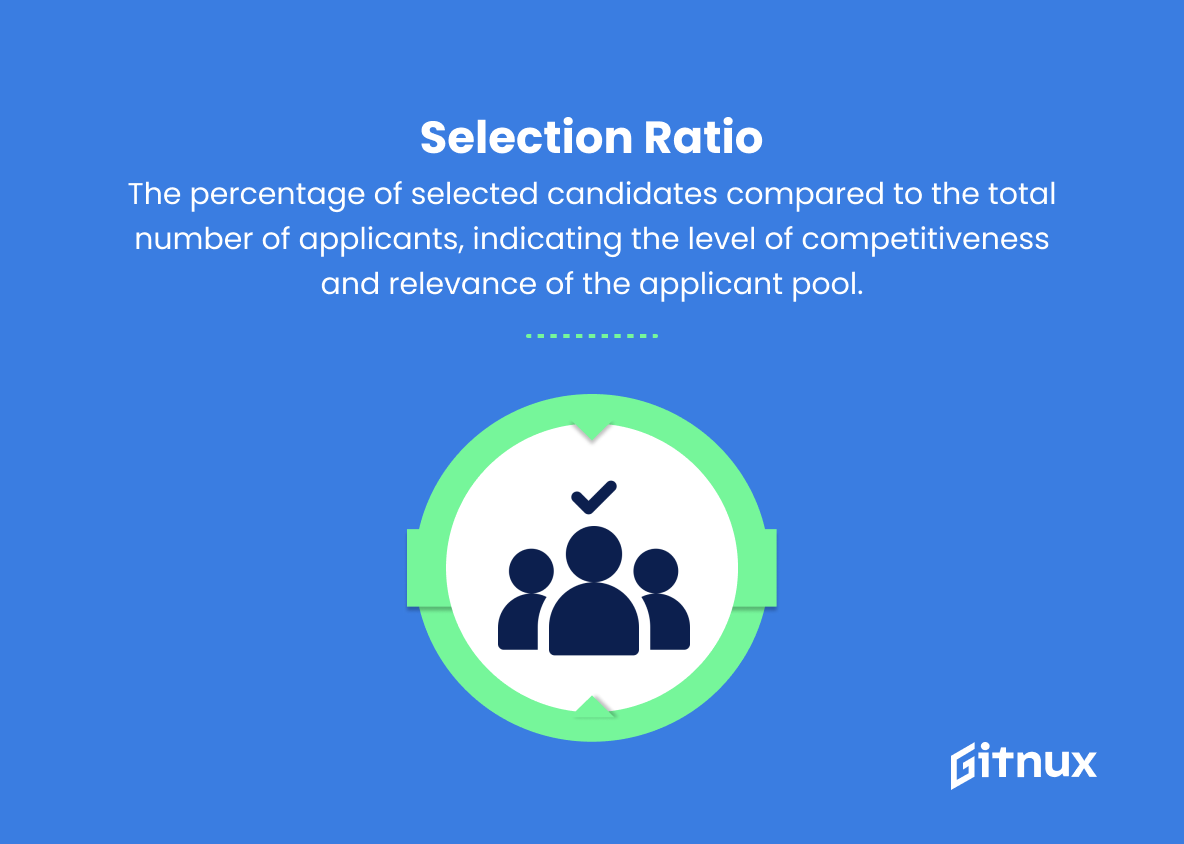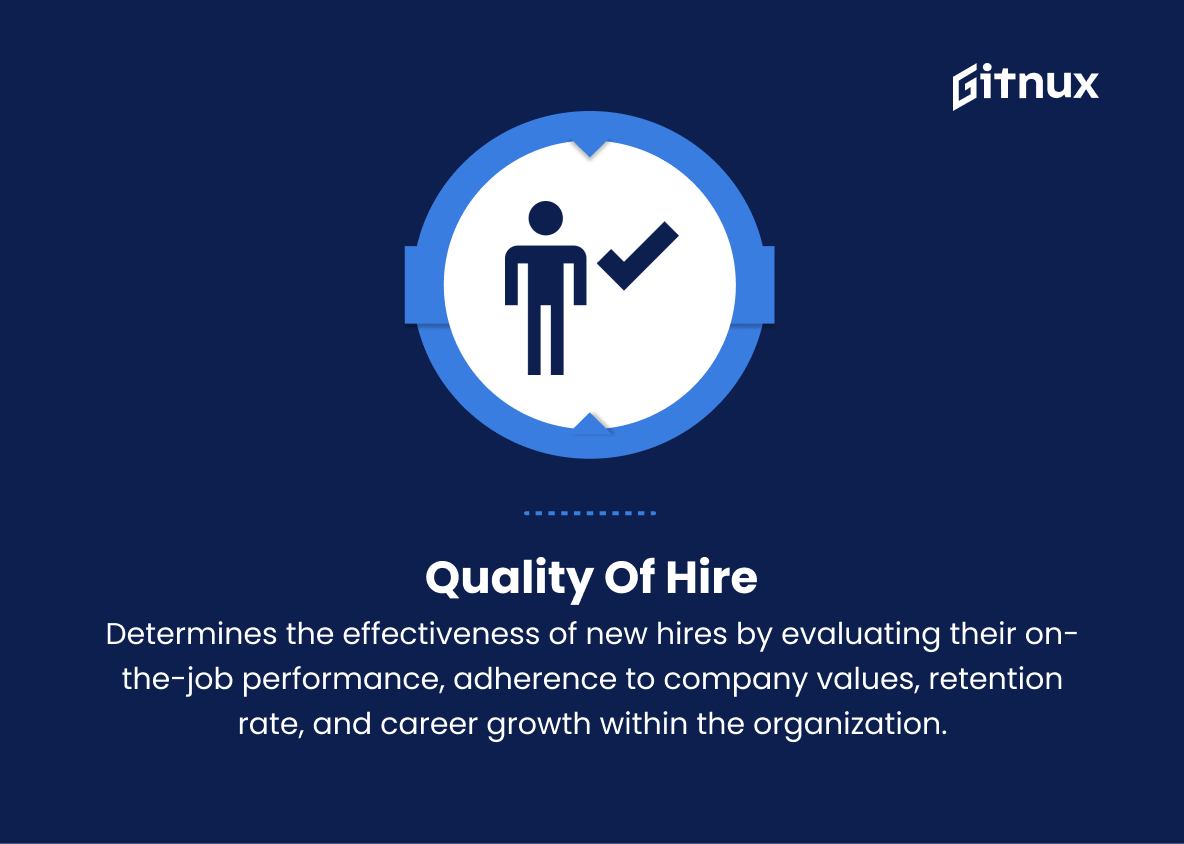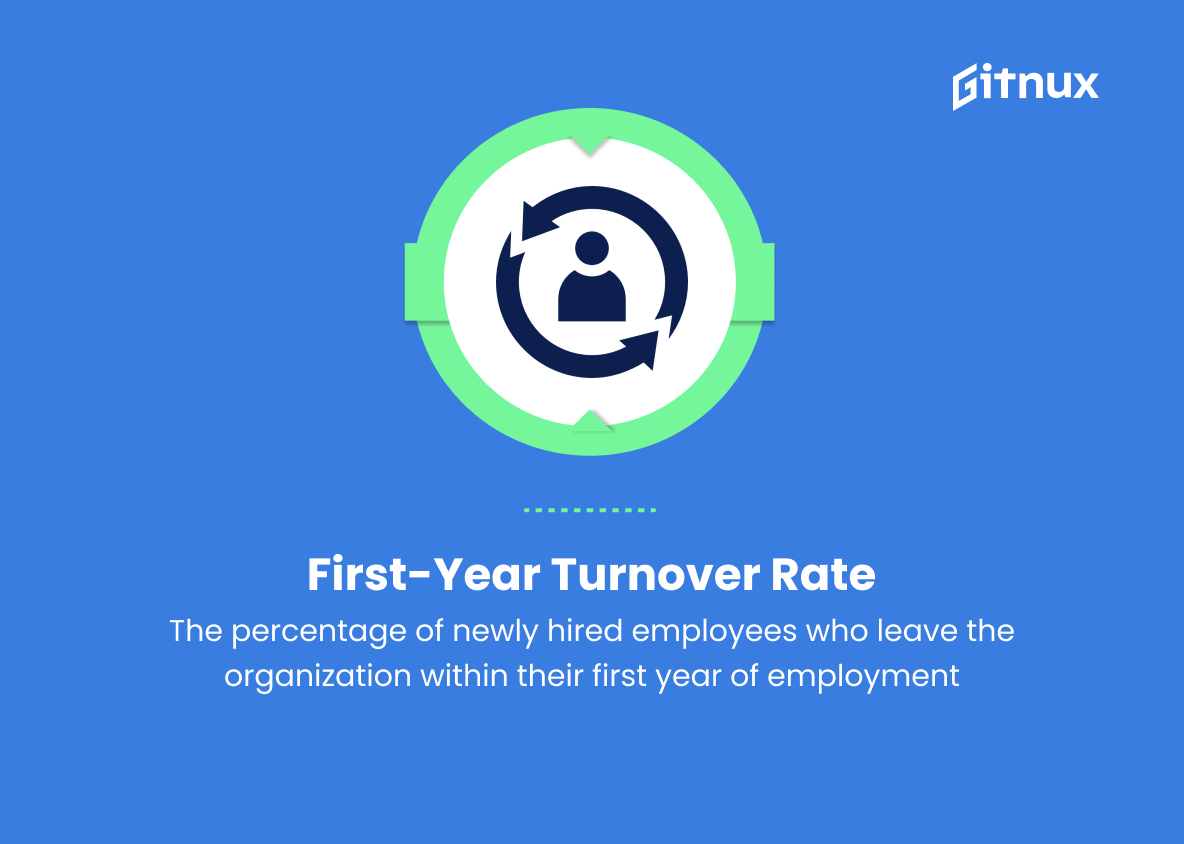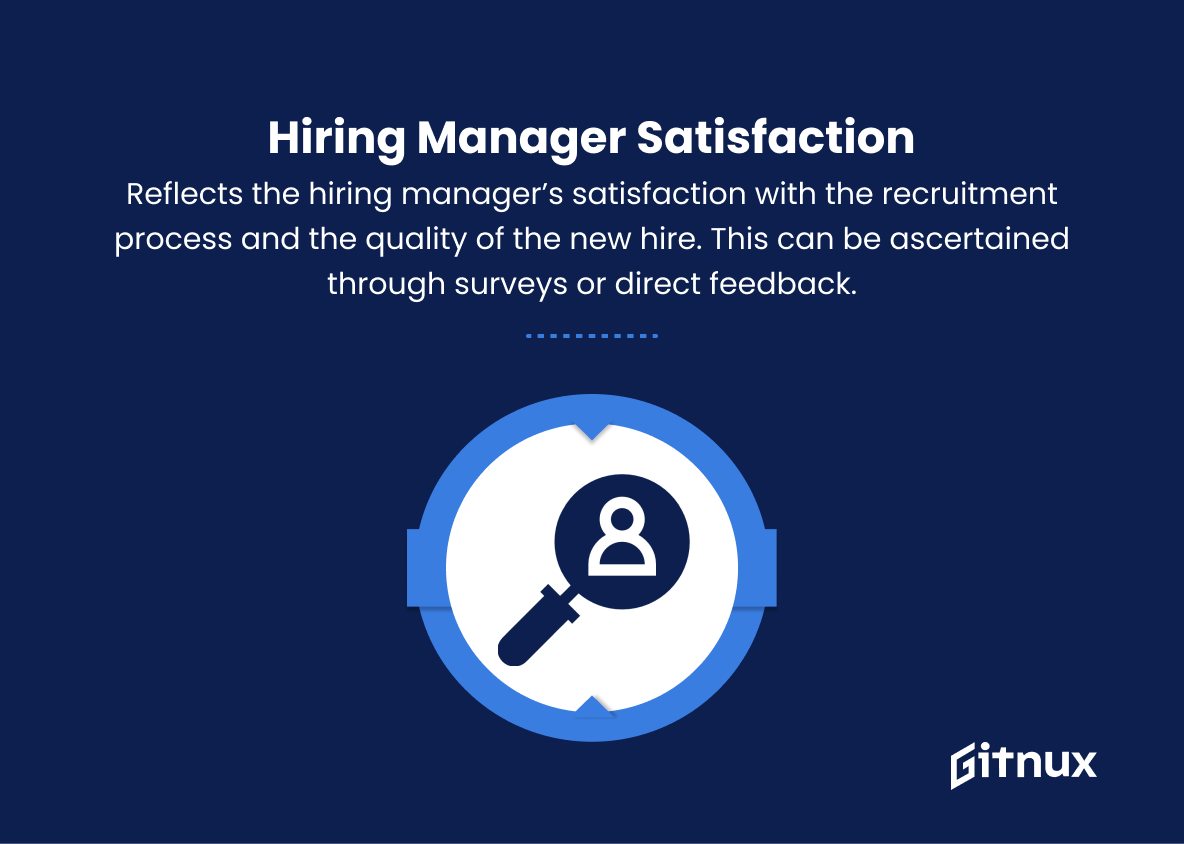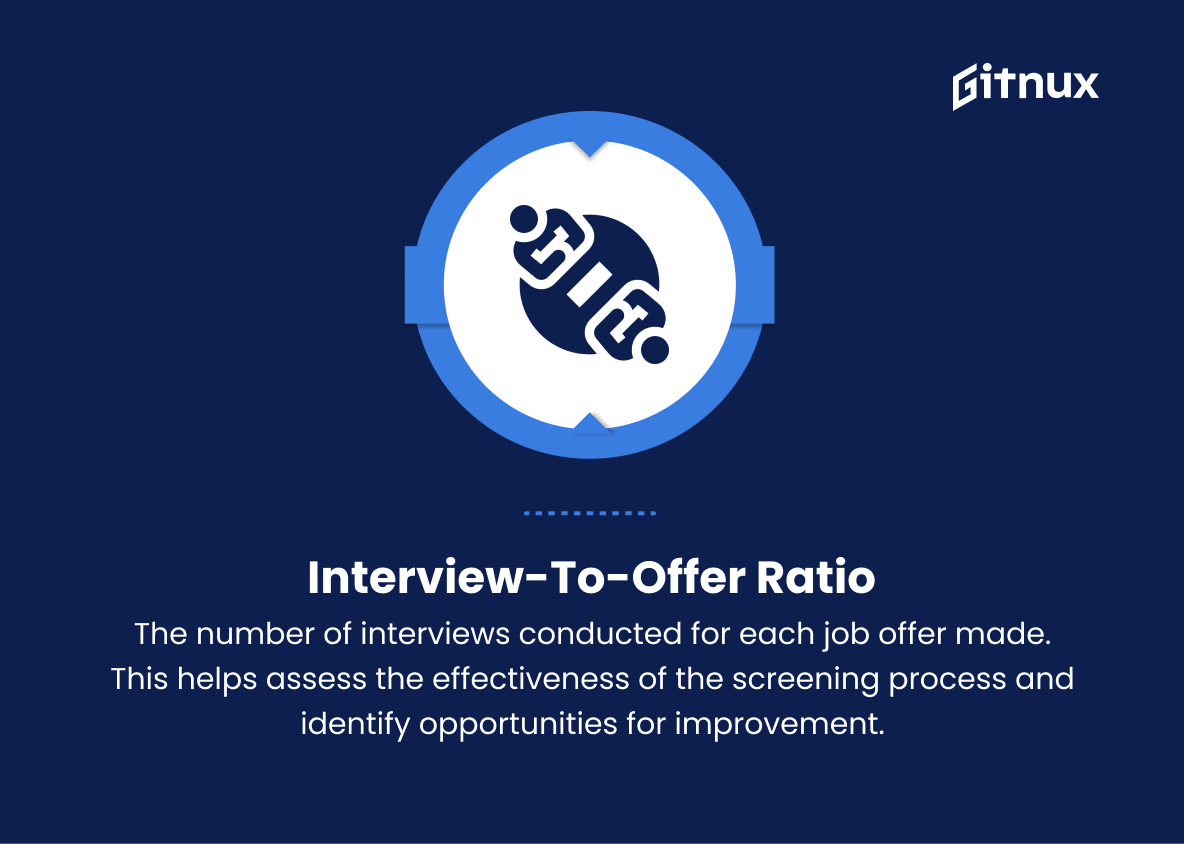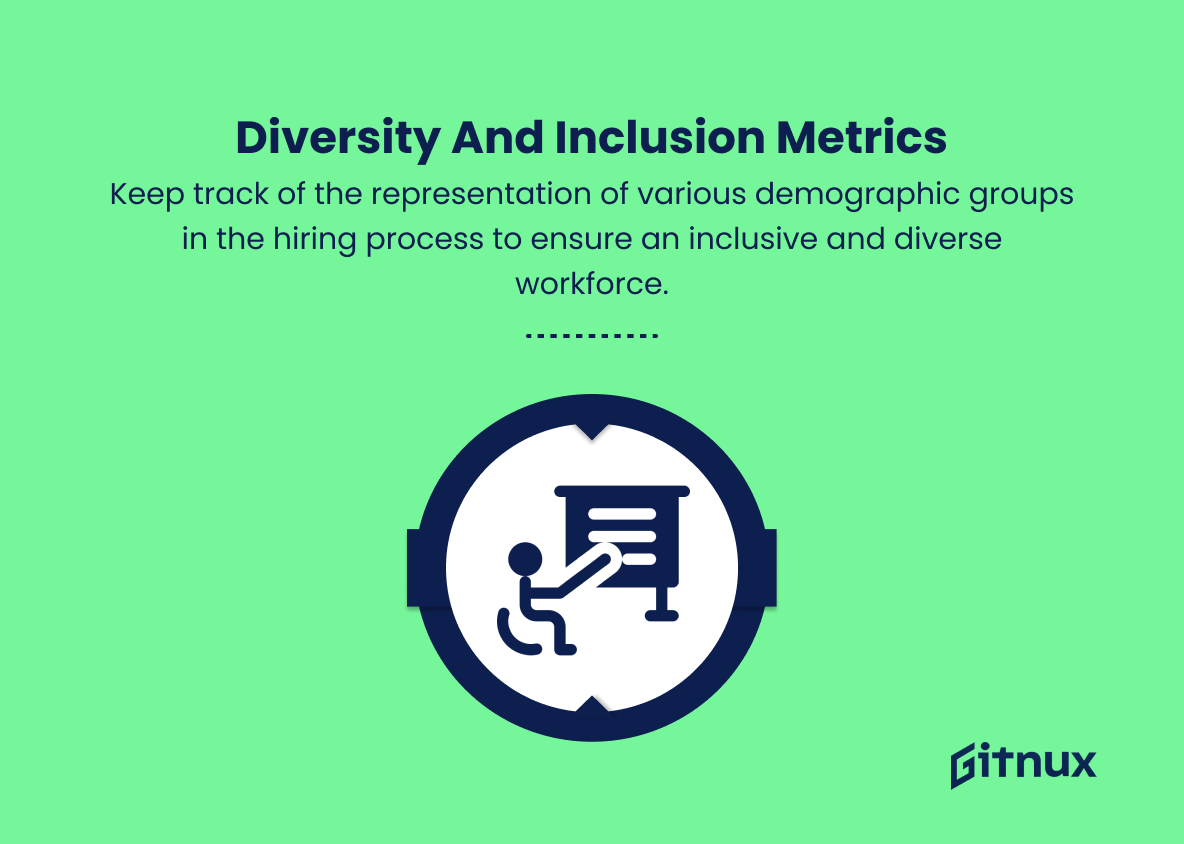In the competitive world of talent acquisition, the ability to recruit and retain top talent has become increasingly important for organizations to stay ahead of the competition. With so many factors influencing the success of the recruiting process, it is essential for companies to measure their recruiting efforts through key performance indicators (KPIs).
These valuable metrics pave the way for data-driven decision-making, continuous improvement, and more effective strategies in the pursuit of the best talent. In this blog post, we take a deep dive into the world of talent acquisition KPIs, exploring their importance, the different types to consider, and how to use them to better manage performance and achieve superior recruiting results.
Talent Acquisition KPIs You Should Know
1. Time to Hire
Measures the average time taken from when a job is advertised or posted to when a candidate accepts the offer. This helps assess the overall efficiency of the hiring process.
2. Cost per Hire
Calculates the total cost incurred during the hiring process, including job advertisements, recruitment agencies, employee referral incentives, and hiring team’s time. This helps determine the effectiveness of the recruitment budget.
3. Offer Acceptance Rate
The percentage of job offers accepted by candidates compared to the total offers made. A high acceptance rate indicates successful recruitment efforts and employer desirability.
In the highly competitive world of talent acquisition, the ability to recruit and retain top-notch professionals has become increasingly crucial for organizations to stay ahead in their industries.4. Candidate Source Quality
Analyzes the effectiveness of different candidate sources, such as job boards, referrals or social media, in terms of producing high-quality and relevant applicants.
5. Application Completion Rate
The percentage of job seekers who complete the application process compared to those who start but do not finish. A low completion rate may indicate a cumbersome application process.
6. Selection Ratio
The percentage of selected candidates compared to the total number of applicants, indicating the level of competitiveness and relevance of the applicant pool.
7. Quality of Hire
Determines the effectiveness of new hires by evaluating their on-the-job performance, adherence to company values, retention rate, and career growth within the organization.
Talent Acquisition KPIs are crucial in evaluating the success and efficiency of an organization’s hiring process.8. Employee Referral Rate
Measures the percentage of new hires referred by current employees. High referral rates are indicative of a positive work environment and strong employer branding.
9. First-Year Turnover Rate
The percentage of newly hired employees who leave the organization within their first year of employment. This helps identify any shortcomings in the onboarding process, candidate fit, or working conditions.
10. Hiring Manager Satisfaction
Reflects the hiring manager’s satisfaction with the recruitment process and the quality of the new hire. This can be ascertained through surveys or direct feedback.
11. Candidate Experience
Measures the overall satisfaction of candidates throughout the talent acquisition process, including the ease of application, communication clarity, and the interview experience.
12. Recruiter Performance
Evaluates the recruiters’ effectiveness by examining KPIs such as time to hire, cost per hire, and positions filled within a specific time frame.
13. Interview-to-Offer Ratio
The number of interviews conducted for each job offer made. This helps assess the effectiveness of the screening process and identify opportunities for improvement.
14. Diversity and Inclusion Metrics
Keep track of the representation of various demographic groups in the hiring process to ensure an inclusive and diverse workforce.
Talent Acquisition KPIs Explained
Talent acquisition KPIs are critical to evaluating the success and efficiency of an organization’s hiring process. Time to hire measures how quickly vacancies are filled, while cost per hire determines the financial effectiveness of recruiting efforts. Offer acceptance rates and the quality of the candidate pool both help assess the overall success of attracting top talent. By analyzing application completion rates, offer acceptance rates, and quality of hire, organizations can identify potential areas for improvement in the hiring process.
By monitoring employee referral rates, first-year turnover rates, and hiring manager satisfaction, it is possible to gauge overall employee satisfaction and the effectiveness of the recruiting process. Focusing on the candidate experience ensures a positive journey for job seekers and promotes a strong employer brand. Evaluating recruiter performance and interview-to-offer ratios allows organizations to further optimize their talent acquisition processes. Finally, tracking diversity and inclusion metrics ensures a fair, equitable, and diverse workforce, which ultimately benefits the organization as a whole.
Conclusion
In summary, talent acquisition KPIs are essential metrics for measuring and improving the effectiveness of your recruiting process. By closely monitoring these metrics, organizations can make informed decisions, optimize their strategies, and ultimately achieve better results in attracting and retaining top talent.
It’s important to keep in mind that talent acquisition KPIs should be tailored to your organization’s needs and values, as every company has unique goals and priorities. Continually reviewing and adjusting your KPIs will ensure that your talent acquisition process remains relevant, efficient, and competitive in today’s rapidly evolving job market.
